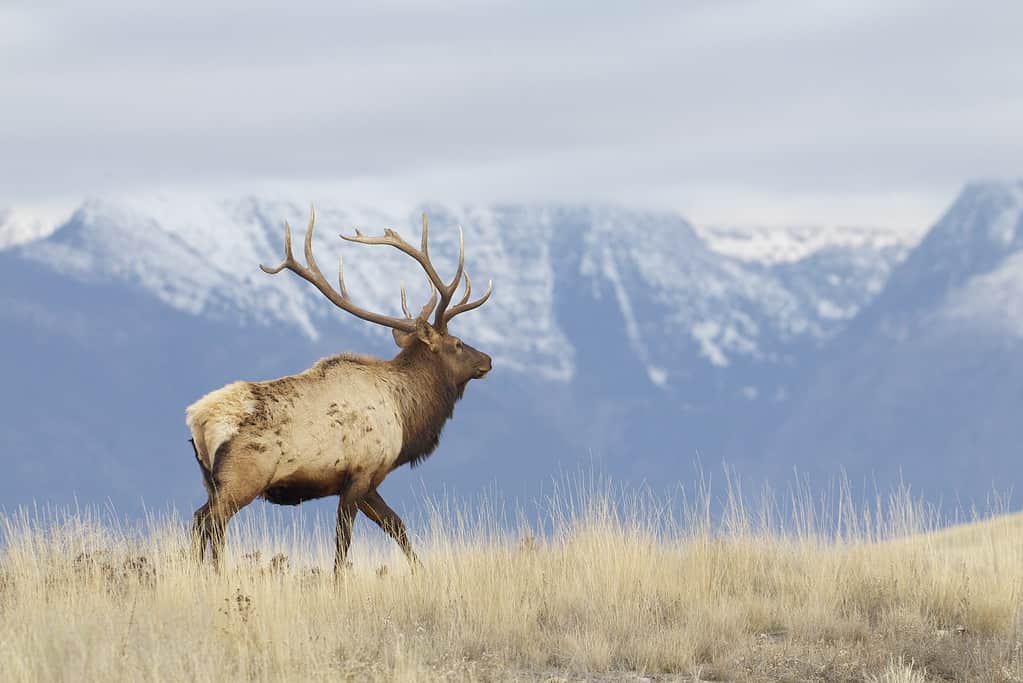In February 2022, a new record-high temperature in Washington state was announced. It may seem odd that the state declared a new record-high temperature during winter. However, the record was actually broken in June of 2021 — the announcement of the record was simply delayed for investigation. This eight-month-long investigation was performed by the State Climate Extremes Committee (SCEC), a committee created in 2006 by the National Oceanic and Atmospheric Administration. The SCEC’s purpose is to evaluate temperature readings and other meteorological observations that break or tie state records. Since the equipment that takes these readings can fail, the SCEC investigates to make sure all readings are accurate. Now that the investigation is complete, we can officially say when and where the hottest Washington temperature occurred.
This article explores the unusual location of the associated temperature, the scorching heat wave it coincided, and the impacts of extreme heat on nearby wildlife.

Washington’s nickname is The Evergreen State because of its many evergreen trees.
©Kirk Fisher/Shutterstock.com
Where Was the Hottest Temperature Recorded in Washington?
The hottest temperature ever recorded in Washington state is 120° F. This scorching temperature was recorded by the Department of Energy at the Hanford Nuclear Site on June 29, 2021. The Hanford Site is in Benton County in south-central Washington. It sits on the mighty Columbia River.

The Hanford Nuclear Site has been fully decommissioned since 1987.
©TobinFricke/Wikimedia Commons – License
Hanford Nuclear Site History
The Hanford Nuclear Site was built in 1943. It was established as part of the Manhattan Project, the United States’ research project for developing nuclear weapons during World War II. In order to make space for the Hanford Site, the federal government condemned and depopulated the small agricultural town of Hanford in 1943. Hanford was first settled in 1907. When the federal government depopulated Hanford in order to build the Hanford Nuclear Site, residents of the town were given a 30-day eviction notice. All of the buildings in Hanford were destroyed except for the high school. The high school was later used as the construction management office for the Hanford Site during World War II.
Hanford Nuclear Site was operational from 1943 until the final reactor was decommissioned in 1987. As the reactors were decommissioned, most of them were cocooned in concrete to prevent contamination of the area. In 2000, the federal government created the Hanford Reach National Monument where the Hanford Site used to operate. Since being abandoned by humans, it is a haven for wildlife. Later in this article, we will explore some of the animal species that live at the Hanford Reach National Monument.

The Hanford Reach National Monument is right on the massive Columbia River.
©J.D.S/Shutterstock.com
Hanford Nuclear Site Average Temperatures
Although Washington state is known for its temperate rainforests, the state is much hotter and dryer east of the Cascade Mountains. The Hanford Site is in the Columbia Plateau, which is an area of Washington, Oregon, and Idaho that is mainly grasslands and steppe.
The average temperature at the Hanford Nuclear Site is far below the record of 120° F. The average high in June, the month when the record high was set, is 84° F. That’s 36° cooler than the record! Since the record was set on July 29, around the end of the month, let’s look at the average high for the next month. The average high at Hanford Nuclear Site in July is 93.6° F. That’s 26.4° cooler than the record of 120° F.
When Was the Hottest Temperature Recorded in Washington?
The hottest temperature ever recorded in Washington occurred on June 29, 2021, during the historic 2021 Western North America heat wave. This heat wave affected Washington, Oregon, Idaho, Western Canada, and the Canadian Territories. It lasted from late June to mid-July. During this heat wave, the scorching temperatures shattered records all across western North America. Canada saw the hottest temperature ever recorded in its history, a scorching 121.3 °F in Lytton, British Columbia. Oregon also saw its record high temperature of 119 °F tied in two different locations during the heat wave. Additionally, temperatures in cities all over the Pacific Northwest and Canada broke records. The heat wave contributed to June 2021 being the hottest June ever recorded in North America.
What Was the Previous Record?
The previous record for the hottest temperature recorded in Washington state is a tie. First, the state’s record high of 118 °F was set on July 24, 1918, in Wahluke. This record was later tied at the Ice Harbor Dam on Aug. 5, 1961.
When Could Washington Break the Record Again?
The 2021 Western North America heat wave was a historic event. However, climate scientists predict that extreme heat events in the Pacific Northwest will occur more often as global temperatures rise. According to a scientific study published by the World Weather Attribution, in today’s climate, an event like the 2021 heat wave is likely to happen approximately once every 1,000 years. However, at 2°C of warming, which current emissions have the world on track to reach as early as the 2040s, an event like this is likely to occur every five to ten years.
Wildlife in Hot Temperatures
The 2021 Western North American heat wave impacted a gigantic area and a wide range of different habitats. In general, the habitats that are more inland have plants and animals that are better adapted to heat and drought. The Pacific Northwest coast, in contrast, has habitats with animals and plants that are adapted to a cool, wet climate. The hottest temperature ever recorded in Washington occurred inland, in an area with wildlife that is more adapted to hot and dry conditions. In fact, the Hanford Reach National Monument has become a haven for high desert wildlife since it was abandoned by humans. Let’s explore some of the interesting animals that live at the Hanford Reach National Monument in south-central Washington state.
Eastern Deer Mouse (Peromyscus maniculatus)

The Eastern deer mouse (
Peromyscus maniculatus) ranges over most of North America.
©jitkagold/Shutterstock.com
Eastern deer mice are one of the most widespread species of deer mice in North America. They can thrive in a vast array of climates, from the boreal forests of Canada to the deserts of Mexico. Deer mice are nocturnal and spend their days resting in their burrows. Resting during the day allows them to stay cooler when temperatures are high.
Mountain Coyote (Canis latrans lestes)

Coyotes are found all across North America and can thrive in many different climates.
©iStock.com/SteveByland
The mountain coyote is one of the 19 subspecies of coyote. Mountain coyotes are found east of the Cascade Mountains in Washington. Coyotes are often crepuscular, meaning they are most active at dawn and dusk. However, when living close to humans, they can shift to being more nocturnal in order to avoid encountering humans. Being most active at dawn, dusk, and night allows them to rest during the hottest part of the day.
Rocky Mountain Elk (Cervus canadensis nelsoni)

Rocky Mountain elk were once extinct in Washington state, but they have been reintroduced.
©Tom Reichner/Shutterstock.com
The Rocky Mountain elk is a subspecies of elk. These animals migrate seasonally. In summer, they migrate to higher elevations where temperatures are typically cooler. In winter, they migrate to lower elevations where temperatures are warmer. According to the Washington Department of Fish and Wildlife (WDFW), a Rocky Mountain elk will cover a range from 2,500 to 10,000 acres over the course of a year. Like coyotes, elk are primarily crepuscular, meaning they are most active at dawn and dusk. This helps keep them cool during the hottest part of the day.
The photo featured at the top of this post is © Kirk Fisher/Shutterstock.com
Thank you for reading! Have some feedback for us? Contact the AZ Animals editorial team.







